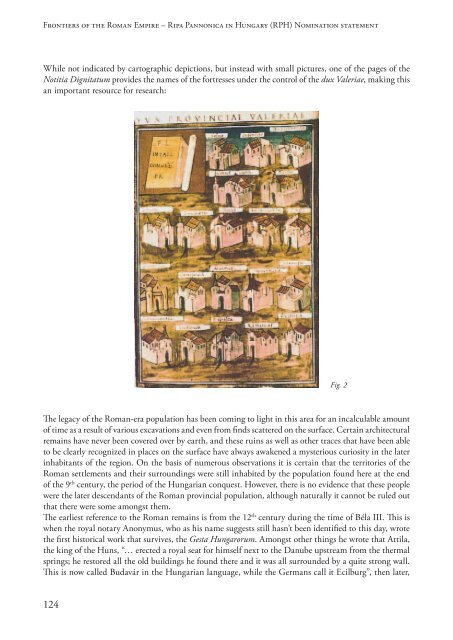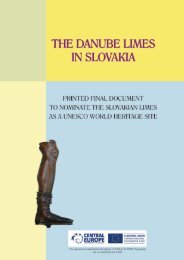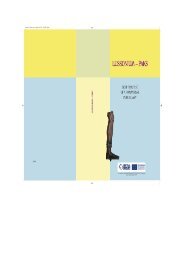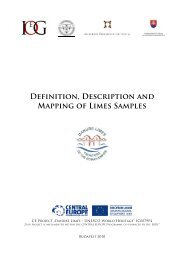the PDF version! - Danube Limes
the PDF version! - Danube Limes
the PDF version! - Danube Limes
You also want an ePaper? Increase the reach of your titles
YUMPU automatically turns print PDFs into web optimized ePapers that Google loves.
Frontiers of <strong>the</strong> Roman Empire – Ripa Pannonica in Hungary (RPH) Nomination statement<br />
While not indicated by cartographic depictions, but instead with small pictures, one of <strong>the</strong> pages of <strong>the</strong><br />
Notitia Dignitatum provides <strong>the</strong> names of <strong>the</strong> fortresses under <strong>the</strong> control of <strong>the</strong> dux Valeriae, making this<br />
an important resource for research:<br />
Fig. 2<br />
The legacy of <strong>the</strong> Roman-era population has been coming to light in this area for an incalculable amount<br />
of time as a result of various excavations and even from finds scattered on <strong>the</strong> surface. Certain architectural<br />
remains have never been covered over by earth, and <strong>the</strong>se ruins as well as o<strong>the</strong>r traces that have been able<br />
to be clearly recognized in places on <strong>the</strong> surface have always awakened a mysterious curiosity in <strong>the</strong> later<br />
inhabitants of <strong>the</strong> region. On <strong>the</strong> basis of numerous observations it is certain that <strong>the</strong> territories of <strong>the</strong><br />
Roman settlements and <strong>the</strong>ir surroundings were still inhabited by <strong>the</strong> population found here at <strong>the</strong> end<br />
of <strong>the</strong> 9 th century, <strong>the</strong> period of <strong>the</strong> Hungarian conquest. However, <strong>the</strong>re is no evidence that <strong>the</strong>se people<br />
were <strong>the</strong> later descendants of <strong>the</strong> Roman provincial population, although naturally it cannot be ruled out<br />
that <strong>the</strong>re were some amongst <strong>the</strong>m.<br />
The earliest reference to <strong>the</strong> Roman remains is from <strong>the</strong> 12 th century during <strong>the</strong> time of Béla III. This is<br />
when <strong>the</strong> royal notary Anonymus, who as his name suggests still hasn’t been identified to this day, wrote<br />
<strong>the</strong> first historical work that survives, <strong>the</strong> Gesta Hungarorum. Amongst o<strong>the</strong>r things he wrote that Attila,<br />
<strong>the</strong> king of <strong>the</strong> Huns, “… erected a royal seat for himself next to <strong>the</strong> <strong>Danube</strong> upstream from <strong>the</strong> <strong>the</strong>rmal<br />
springs; he restored all <strong>the</strong> old buildings he found <strong>the</strong>re and it was all surrounded by a quite strong wall.<br />
This is now called Budavár in <strong>the</strong> Hungarian language, while <strong>the</strong> Germans call it Ecilburg”, <strong>the</strong>n later,<br />
124











